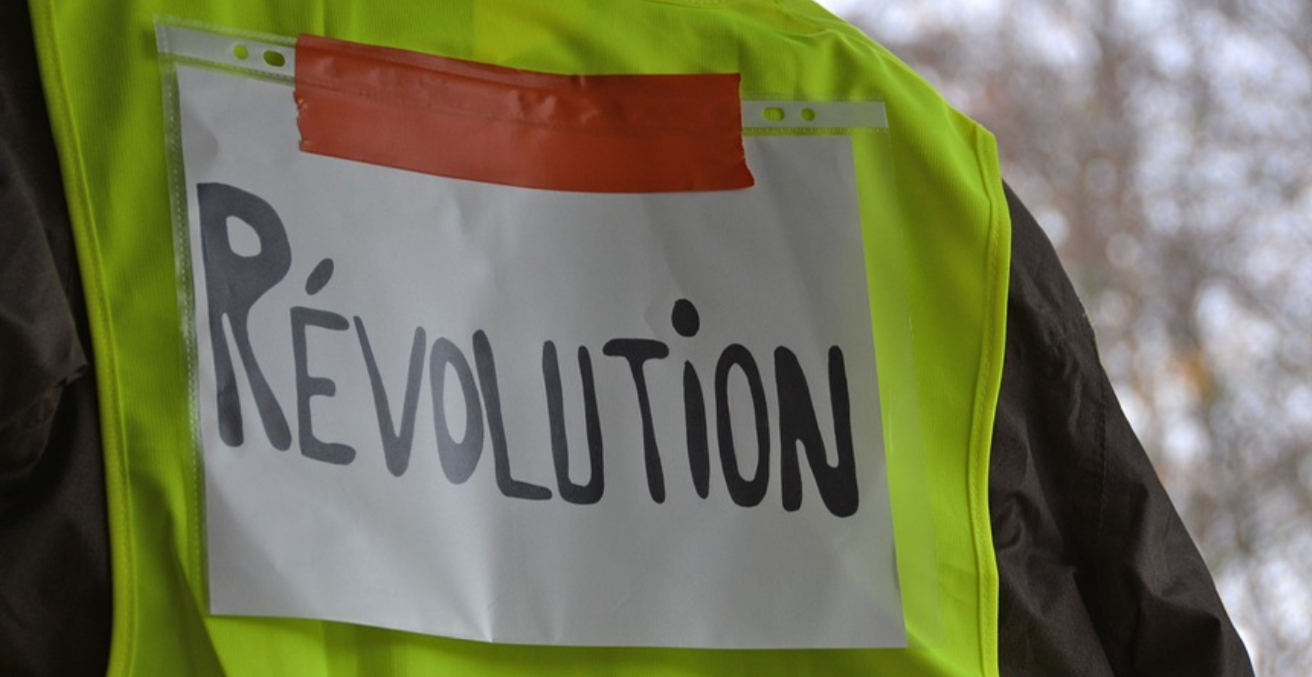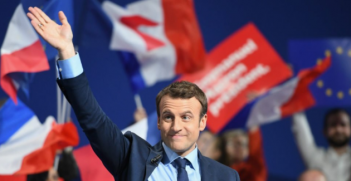Understanding the Collapse of Confidence in Macron

Macron’s unpopular economic policies have led to a collapse in public confidence, which has culminated in France’s recent Gilets Jaunes movement.
Emanuel Macron was internationally praised for his election victory. Within a year, he created a political party that would gather enough support to win the presidential elections. In French political history this was unprecedented. But behind this success story, the low support for Macron and the Gilets Jaunes, a sometimes violent movement that has sprug up in the wake of rising fuel prices, reminds us that many of the challenges on the agenda prior to Macron’s election have not been addressed.
Macron’s support was narrow from the start. In the first round of the presidential election, Macron qualified for the second round with 24.01 percent of the vote. On the eve of the first round of the presidential elections, the political landscape was divided fairly evenly between four parties ranging from the left to the extreme right. Marine Le Pen scored 21.3 percent of the vote, François Fillon 20.01 percent and Jean-Luc Mélenchon 19.58 percent. With 26 percent approval rating in the polls nowadays, Macron’s support iswithin the scope of the votes he gathered in the first round of the presidential election.
The choice offered between the two rounds of the election did not ease the challenges and demands of a split political landscape. Emmanuel Macron, his party and most of the mainstream media set up the second round of the presidential election between Macron and Le Pen as a Hobson’s choice between progressive neoliberalism and reactionary populism. The good vote was a vote for progressive neoliberalism, an alliance between mainstream currents of new movements (feminism, anti-racism, multiculturalism and LGBTQ rights) and the forces of international and national capital. The regressive vote was a vote for Le Pen, a reactionary force and fascist threat to democracy. Despite the rhetoric, Macron only reached 62 percent in the second round, where more than a quarter of the population did not vote, a record in the history of the presidential vote. While it was a relief that Le Pen did not prevail, the causes of her voters’ discontent was real and does not seem to have been addressed since. Her party’s attempt to co-opt the Gilets Jaunes movement also shows the vote for Le Pen is still prevalent.
Third, communication missteps, amplified by the media, gave the impression that the president was blaming the most vulnerable for the difficulties the country was facing. While in Denmark, Macron made a sarcastic comment claiming that the French were against change. While on tape, he complained about the huge cost of the welfare state. Then, to a young man asking for a job, he suggested that he just had to cross the road to find one. These blame games fuelled the idea of the arrogance of the president and further led to a loss of support.
However, the key contributors to the loss of support in Macron’s presidency were his policy priorities, especially his tax break for the super-rich. Macron’s presidency seems to have confirmed his biggest critics’ claims during the presidential campaign. Le Pen and Melenchon, drawing attention to Macron’s previous job at the Rothschild Bank, claimed that Macron would work only for the super-rich once president. Macron’s most iconic policy was to annul the tax on the super-rich, also known as the ISF (Impot de Solidarite sur la Fortune). The justification was that removing this tax would boost investment in France and create jobs. However, the unemployment rate has not changed much since the annulment. Both previous presidents, Nicholas Sarkozy and François Hollande were hesitant to annul the tax as they feared they would antagonise part of the population. Hollande himself warned Macron that this policy would be very unpopular for much of the population. And it was. One of the biggest demands of the Gilets Jaunes is for Macron to reintroduce the tax on the super-rich. The tax policy seemed particularly unfair as taxes were on the rise for the rest of the population, particularly the carbon tax on fuel to address climate change.
Lastly, the president took three weeks to respond to the protests and this may have consequences on the long term. Some journalists called it Macron’s Thatcher moment, as he seemed to be waiting for the movement to die down as UK Prime Minister Margaret Thatcher did with the miners’ strike in 1984-85. Although the tactic has been used many times in the past as the country has a tradition of expressing its discontent in the streets, Macron seemed slow in comprehending the extent of the protests and the level of dissatisfaction. As it had done many times in the past, the French government attempted to discredit the movement by emphasising its violence rather than accepting its demands. But instead of being discredited, the movement received increasing support, which reached 80 percent of the population. In this context, Macron’s slow response was particularly damaging for his popularity.
In his public intervention, Macron made significant concessions to respond to the demands of the Gilets Jaunes. Lower income earners will receive €100 in January 2019. The carbon tax and other taxes will be halted for a year. He also promised to hasten democratic reforms. However, he never mentioned the word Gilets Jaunes during the intervention and emphasised ending the violence. He also refused to reintroduce the tax on the super-rich. Macron’s ability to deliver on his promises will determine whether he receives an increased level of support.
Dr Maryse Helbert is a lecturer in Environmental Studies at the University of Melbourne. In 2016 she was awarded a PhD by the University of Melbourne for her research at the crossroads of feminist studies, environmental studies and critical political economy.
This article is published under a Creative Commons Licence and may be republished with attribution.





